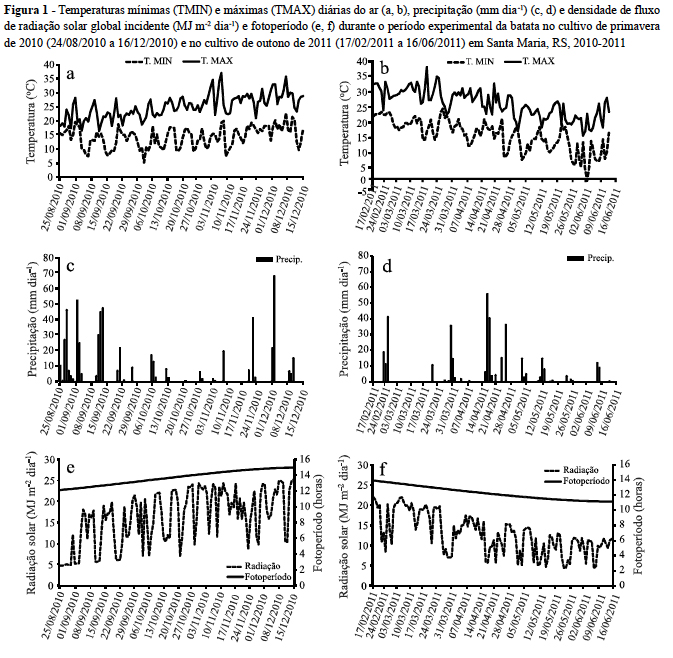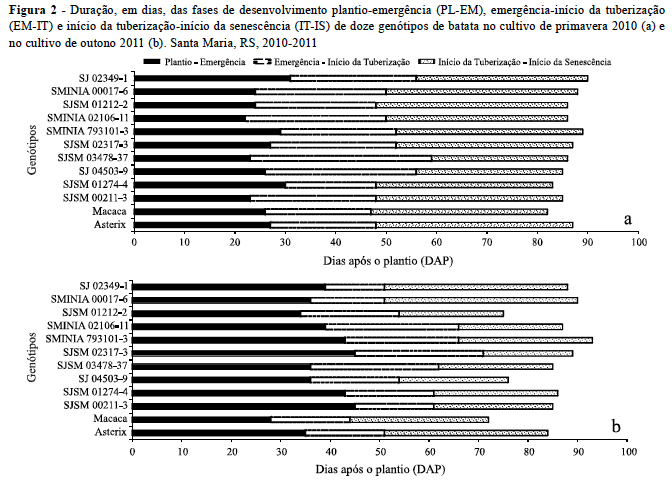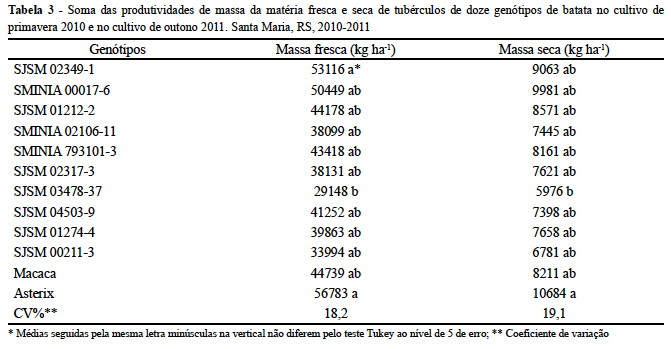The objectives of this study were to characterize plant growth and determine the productivity of tubers in advanced potato clones during two growing seasons (autumn and spring) in a subtropical environment in the State of Rio Grande do Sul. Ten advanced clones from the Potato Genetics and Breeding Program of the Federal University of Santa Maria, and two cultivars (Asterix and Macaca) were evaluated. The following were all determined: number of accumulated leaves on the main stem; final number of leaves; phyllochron; evolution of the green-leaf area index; maximum leaf-area index; phase duration in days for planting to emergence, for emergencence to tuber initiation, tuber initiation to start of senescence, and emergence to start of senescence; tuber fresh and dry matter. There was a variation in phyllochron, final leaf number and evolution of the leaf-area index as a function of genotype, for each growing season. Comparing the spring and fall crops, and excluding the planting to emergence phase, phase duration in the development cycle of the potato was generally lower for the autumn crop. It was found that phase durations for emergence to tuber initiation, and tuber initiation to the start of senescence, determine tuber productivity. Except for the SJSM 03478-37 clone, advanced clones present a high tuber yield and good adaptation to the two cropping seasons in the subtropical environment of Rio Grande do Sul
Potato; Crop Phenology; Leaf Analysis







